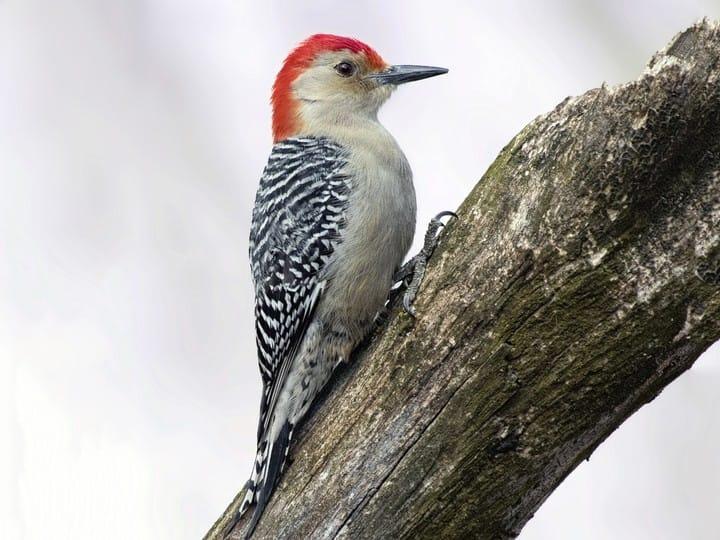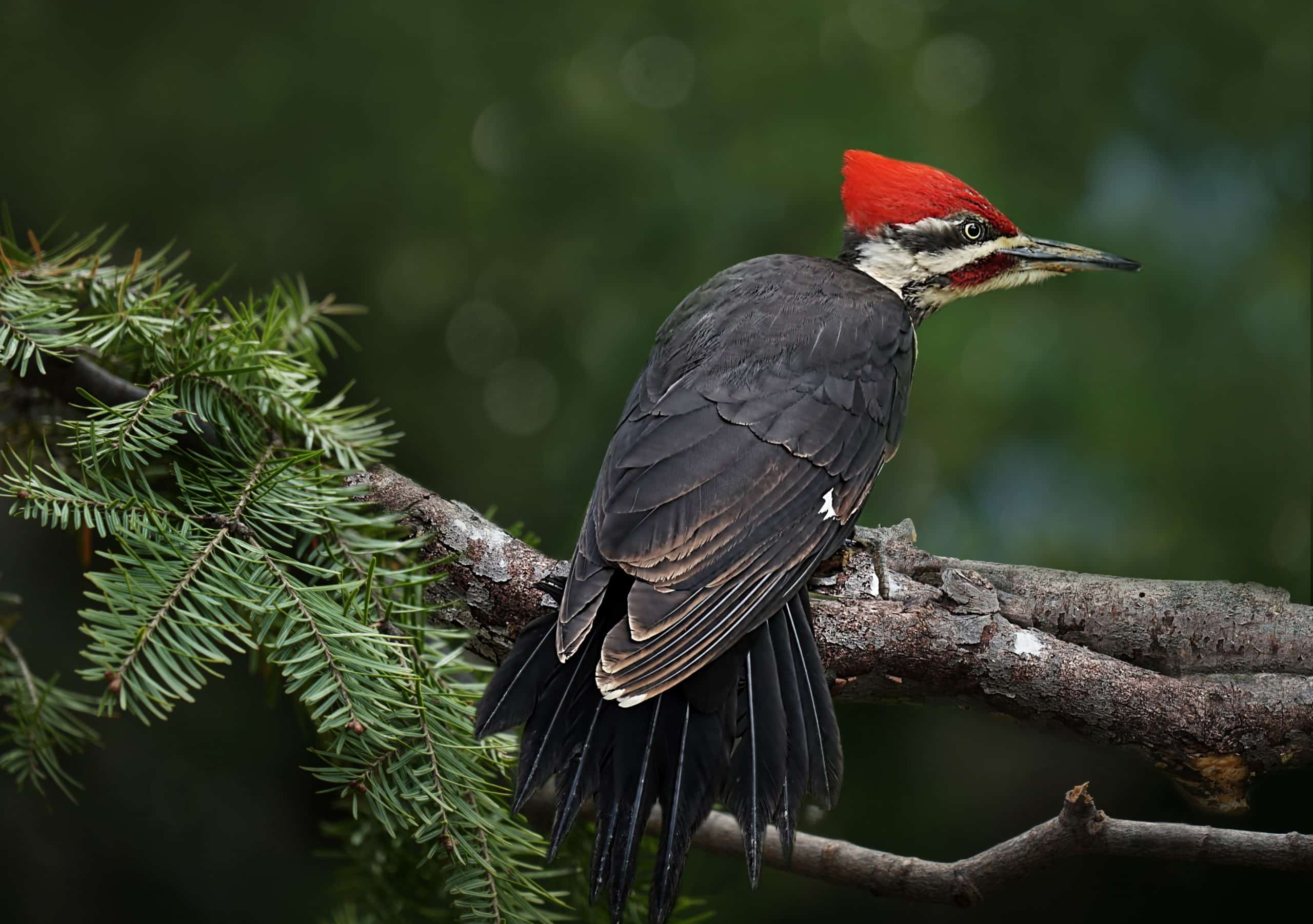Running Into Woodpeckers in Florida: Types Variety and Recognition
Running Into Woodpeckers in Florida: Types Variety and Recognition
Blog Article
Woodpeckers: A Comprehensive Guide to Comprehending These Distinct Birds
Woodpeckers, with their distinct behaviors and physical attributes, have long mesmerized the curiosity of ornithologists and nature fanatics alike. As we discover the intricate makeup, diverse varieties, and eco-friendly value of woodpeckers, a much deeper gratitude for these one-of-a-kind birds and the enigmas they hold unravels.

Woodpeckers' Drumming Behavior
Woodpeckers show a balanced and precise drumming habits that serves numerous crucial features in their lives. This habits is largely associated with communication, territory defense, and foraging. The distinctive drumming audio is developed by the quick pecking of their beaks against tough surfaces such as tree trunks, branches, or perhaps steel things.
Interaction is a vital aspect of woodpecker actions, and drumming plays a considerable role in this process. Woodpeckers make use of drumming to develop their visibility, draw in mates, and preserve contact with their partners and offspring. The regularity, strength, and duration of drumming sequences communicate details messages to various other woodpeckers in the area.
In enhancement to communication, woodpeckers use drumming behavior for region protection. Woodpeckers in Florida. The loud and repetitive drumming functions as a warning to prospective intruders, indicating that the location is already claimed. By establishing their territory via drumming, woodpeckers reduce the possibility of disputes over important sources such as food and nesting websites
Additionally, woodpeckers also employ drumming as a foraging method. The balanced pecking aids them situate bugs concealing below the bark of trees by creating resonances that interfere with the victim's cover-up. This actions showcases the versatility and resourcefulness of woodpeckers in using their drumming abilities for numerous essential objectives.
One-of-a-kind Adjustments for Tree Climbing
Having grasped the art of drumming to connect, protect region, and forage, woodpeckers have actually progressed unique adjustments that facilitate their remarkable climbing capabilities in their arboreal environments. One vital adaptation is their specialized feet. Woodpeckers have zygodactyl feet, with 2 toes directing ahead and two toes pointing backwards. This arrangement offers a strong grasp on the vertical surface areas of trees, allowing them to cling easily while foraging for insects or drumming. Furthermore, woodpeckers have stiff tail plumes that serve as a prop to support their bodies as they climb. These tail feathers provide stability and equilibrium, making it possible for woodpeckers to maneuver up tree trunks with precision and dexterity.
Furthermore, woodpeckers have effective neck muscular tissues and an one-of-a-kind skull framework that aid in their climbing up capacities. Their strong neck muscular tissues enable them to swiftly eat tree bark without experiencing whiplash, while their thick head and small brain work as shock absorbers, shielding them from the influence of duplicated drumming. These adjustments jointly make learn the facts here now it possible for woodpeckers to browse the vertical world of trees with effectiveness site web and poise.

Duty of Woodpeckers in Communities
By foraging for pests under the bark of trees, woodpeckers help control bug populaces, stopping break outs that can harm the total health of the woodland. Additionally, woodpeckers develop cavities in trees that offer as vital nesting sites for a variety of various other bird types, promoting biodiversity within the environment.
Furthermore, the drumming and vocalizations of woodpeckers play an essential function in interaction and territory establishment. These audios not only serve to attract mates but also aid define borders in between different woodpecker areas, minimizing conflicts and promoting a harmonious coexistence within the forest neighborhood. Overall, the presence of woodpeckers in woodland ecosystems highlights their relevance as keystone varieties, affecting the characteristics and working of these environments in diverse ways.
Makeup: Specialized Beaks and Feet
In the intricate internet of forest ecosystems, the specialized beaks and feet of woodpeckers are crucial adjustments that enable them to accomplish their essential ecological functions. Woodpeckers possess one-of-a-kind physiological attributes that are specifically created to help them in their foraging and nesting actions.
One you can try these out of the most unique feature of woodpeckers is their strong, chisel-shaped beaks. These beaks are perfectly adapted for boring into wood to uncover insects, larvae, and sap covert underneath the bark of trees. The solid muscle mass and tough structure of their beaks permit woodpeckers to peck at a price of approximately 20 times per second without creating damages to their heads.
Additionally, woodpeckers have specialized feet that help in their acrobatic climbing up capacities. Their feet have two toes directing forward and 2 toes pointing backwards, giving a strong hold on vertical surface areas (Woodpeckers in Florida). This unique foot plan, in addition to stiff tail feathers that work as a supportive prop, allows woodpeckers to hold on to tree trunks and branches easily while they look for food or dig deep into nesting tooth cavities
Woodpecker Variety Variety
Woodpeckers are a diverse team of birds located throughout numerous environments worldwide, with over 200 well-known varieties showing adaptations to various environments. Woodpeckers have developed to inhabit an array of atmospheres, from woodlands and timberlands to grasslands and deserts, each offering distinct difficulties that have influenced the development of distinct woodpecker varieties.
One more adding variable to woodpecker varieties variety is their specialized feeding habits. Various types have actually progressed to exploit different food resources, such as insects, tree sap, fruits, and nuts, leading to the development of particular adjustments in beak form, size, and toughness. These adaptations enable woodpeckers to forage successfully in their corresponding habitats, decreasing competitors amongst varieties and promoting particular niche differentiation. Furthermore, geographic isolation and historic factors have actually played a function fit the distribution and variety of woodpecker varieties, bring about the vast range of specialized adaptations seen in these interesting birds.

Verdict
To conclude, woodpeckers are fascinating birds that exhibit special drumming behavior, specialized adjustments for tree climbing, and play crucial functions in ecological communities. Their makeup, including specialized beaks and feet, allows them to thrive in their setting. With a varied variety of woodpecker types discovered worldwide, these birds are necessary for keeping the health and equilibrium of forests and timberlands. Comprehending and valuing the intricacies of woodpeckers can provide beneficial understandings into the environment.
Report this page